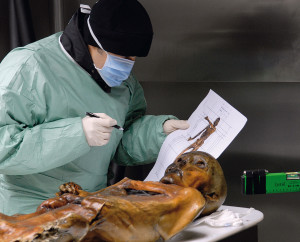
It was a perfect murder.
Well, almost.
The victim’s body lay undetected for over 5,000 years, and even after it was discovered, it took a decade for scientists to realize they were dealing with a murder victim. Forensic analysis of the Iceman not only pulled back the curtains on a Stone Age murder cover-up, it also showcased just how far back the long arm of modern forensic science can reach.
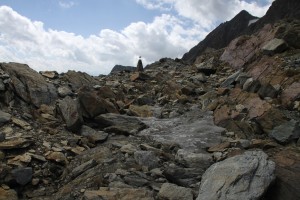
Discovery of the Iceman
It was on a sunny, late summer afternoon on September 19, 1991 that two German hikers decided to take a shortcut. Helmut and Erika Simon had been descending from the Finail peak in the Ötztal Alps near the Austrian-Italian border when they left the footpath to traverse a plateau beside a rocky gully with glacial meltwater. The glacier’s retreat had only recently revealed the gully. In 1922, when the Austrian-Italian border was established, the gully lay under 20 meters of snow and ice. Picking their way through the rocks, the Simons noticed something brown on the floor of the gully. They approached to inspect it, and to their horror, realized it was the head and shoulders of a human corpse jutting out of the ice and water. Helmut snapped a picture and the couple hurried down the mountain to notify the police.
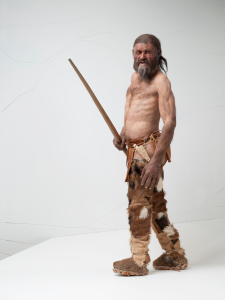
Austrian police and mountain rescuers were at the scene the following day, but recovery was difficult. In order to free the corpse from a gully full of running meltwater, the men had to work underwater. They worked for four days before they could hack the corpse out of the ice. A helicopter flew the body, along with pieces of clothing and equipment that emerged in the ice water, down the mountain. A hearse then transported it to the Institute of Forensic Medicine in Innsbruck, Austria, where the frozen man’s equipment raised a few eyebrows. The Austrians called in an archaeologist. It was an axe that caught the expert’s attention. Based on its make, he immediately dated the find as “at least four thousand years old.” Thus began a historical and media sensation. Ötzi (“Ertsie”), as the media dubbed him, turned out to be the oldest well-preserved mummy in the world. Radiocarbon dating confirmed the archaeologist: Ötzi lived between 3,350 and 3080 B.C.
Clues to the Iceman’s Life
Archaeologists were able to paint some of Özti’s biography with broad brush strokes. Pollen analysis indicated he lived south of the mountains and died in the late spring, probably in June. His clothing – a bearskin cap, leggings, loincloth, shoes, and cape – were well suited to cold and high altitudes, so the Iceman probably planned his trip up the Alps. And the equipment he brought with him – tools and a primitive first-aid kit – suggested he was on a long journey. Ötzi’s copper axe represented rare, valuable, state-of-the-art technology for the cusp of the Bronze Age, suggesting that the Iceman was a person of high status in his culture.
Murder!
Modern forensic techniques, however, gave the Iceman a megaphone to announce to the world he had been murdered. Computer tomography revealed an arrowhead in Ötzi’s left shoulder in 2001. Someone had shot him from behind. That shot was no accident. Hunters of the Middle Stone Age favored the left shoulder as a target for a deadly chest shot.

Arrowhead
Scientists had overseen the arrowhead because the shaft was missing: Some theorized the archer had yanked it out to cover up a murder. But Ötzi also had a skull fracture, and red blood cells present in his brain tissue suggested resulting brain damage. Although both the arrow and fracture were mortal wounds, pathologists concluded the fracture was the immediate cause of death. Did the archer also hit Ötzi on the head? Or did Ötzi injure his head when he collapsed after the arrow shot? The answers aren’t clear.
Battle?
Why was the Iceman up at an elevation of over 10,000 feet in the first place? A group of hospital pathologists discovered a critical clue in 2003. Ötzi had a recent defensive wound, only a few days old, in his right hand. The “cut in his hand shows a battle before the Iceman died,” says the South Tyrol Museum of Archaeology, where Ötzi is now housed. Was he fleeing from an enemy?
Last Meal
Maybe not. Analysis of Ötzi’s stomach showed he ate a large meal of Alpine goat meat directly before his death – gastric emptying times indicate the meal was within two hours of his death. Would he have taken the time to hunt and cook if he were fleeing for his life? But pollen analysis of the intestinal contents offers another clue. He had been down in the valley only twelve hours before his death. He must have spent his last hours hoofing it up the mountain.
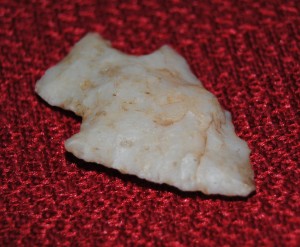
Iceman Wasn’t Transported After Death
Theories that Ötzi might have been murdered in the valley and then carried up to the mountain for burial have been refuted. The corpse would have then shown more signs of decomposition; in particular, the blood clots that had formed in its wounds would have been damaged. Ötzi died on site in the Alps. It’s possible, though, that the murderer shoveled snow over the Iceman after the murder to conceal his crime.
No Foreign Human DNA
Both the corpse and clothing have been examined for foreign human DNA, but to date, nothing has been found. Information about the identity of the murderer remains a mystery. Blood was found on his grass cape and bow, but proved to be animal blood.
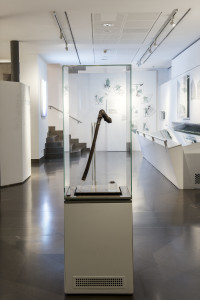
Motive
Questions about motive are the most difficult, but the copper axe might offer a clue. The archer didn’t steal it, so robbery was not a motive. But the axe must have represented status, and a power struggle might have driven someone to release the arrow. That could be why the valuable axe was left with the body: Anyone carrying the axe after Ötzi had disappeared might have been accused of murder in his community.
Future research will certainly offer some more answers. We will never know all of them. But not even the Queen of Cold Cases can hide all its clues from modern forensic science.
Which discovery about Ötzi surprises you the most?
Literature on point:
South Tyrol Museum of Archaeology website
Dirk Husemann, Tod in Neandertal; Akte Ötzi; Tatort Troja: Die ungelösten Fälle der Archäologie (Stuttgart: Theiss 2012)

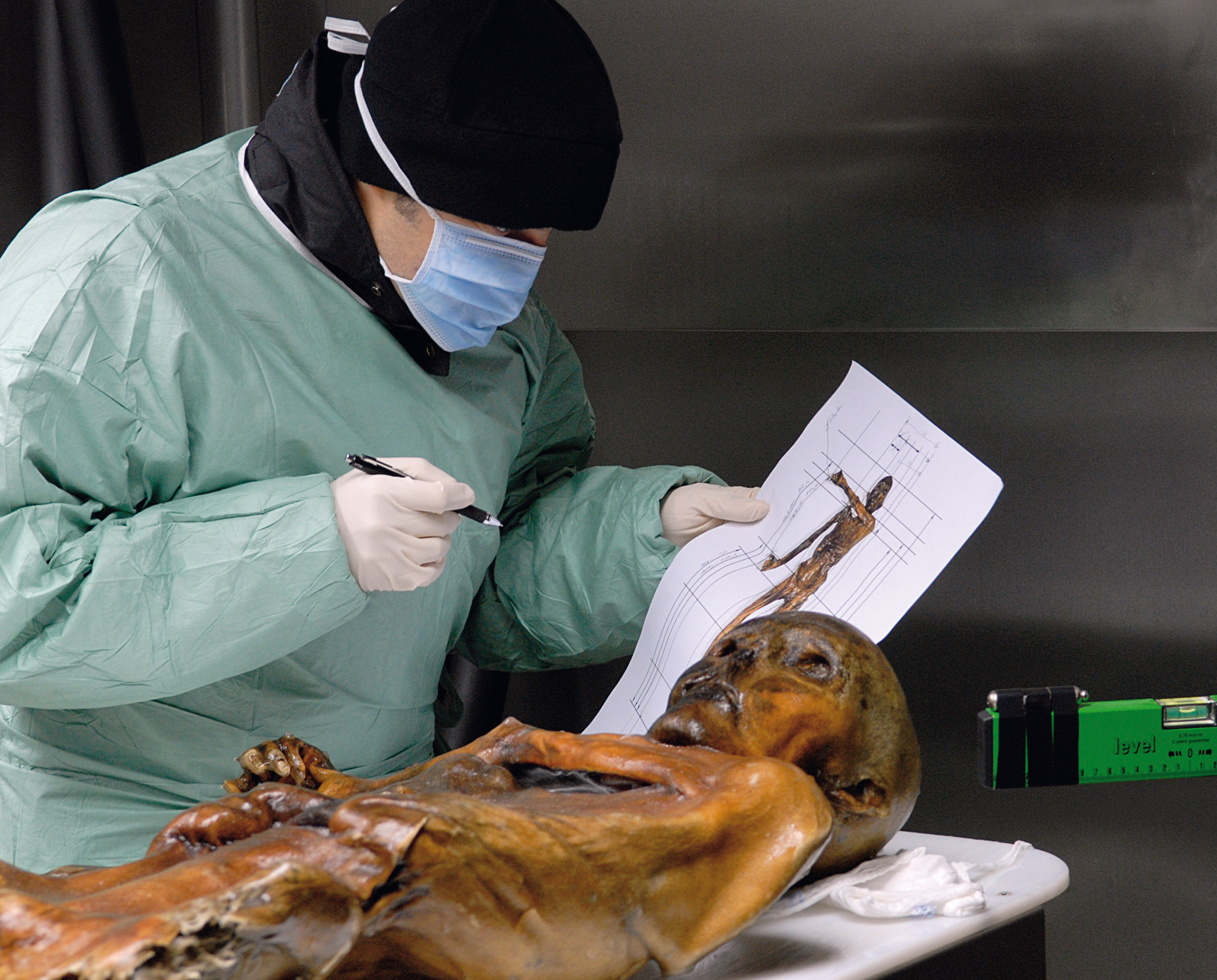



You never know what you might find on a hike! I wonder if Helmut and Erika got a reward…
I’ve never found anything half so interesting on a hike, Brian! (Have you?) Of course, I am always looking up for the birds and not down at the ground.
Helmut and Erika did receive a finders fee of 150,000€ (I think that was the amount). Unfortunately, Helmut had already died by the time the money was presented. But at least he and Erika have the honor of being recognized as the official Iceman discoverers.
This is so fascinating! I teach a criminalistics class and would love to use this story if you don’t mind!
Thanks, Christina! Of course you may use this story. Please check your Email; I’ve forwarded the text to you. Have fun with your criminology class, and if you think of it, please let me know how this story went over.
Hi Ann Marie,
I would also love to use this for my High School Forensics class. Would that be o.k.?
Yes, Carrie, I’d be honored. Feel free to use the text so long as you attribute me. Please note, though, that I don’t own the rights to most of the pictures. I obtained them from the Ötzi Museum in South Tyrol, where they are made available on its website for the media. Check the museum’s press releases as well, because that is where the blood cell photo came from. The arrow photo is the only one that is mine, and you have my permission to use that if you want.
Good luck with your class! If my high school had offered forensic science, I would have most certainly taken it. I’ll bet the class is popular.
Just wondering when was this site last updated.
I’m so glad that you happened to mention this article. It just amazes me how much they can tell about a murder that took place so very long ago. It brings to mind the mystery about various European groups who may have been mining for copper in the land around Lake Superior in ancient days. In one article it says that the mining may have stopped 2,000 years before the European Bronze Age, which began roughly 5,000 years ago according to one article. There are so many things yet left to discover.
It’s amazing what modern forensic science can tell us. That’s interesting about the copper mining around Lake Superior. But how do they know the miners were European and not Native American?
It’s amazing what modern forensic science can tell us. That’s interesting about the copper mining around Lake Superior. How do they know the miners were Europeans and not Native Americans?